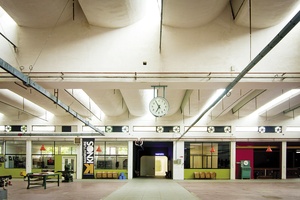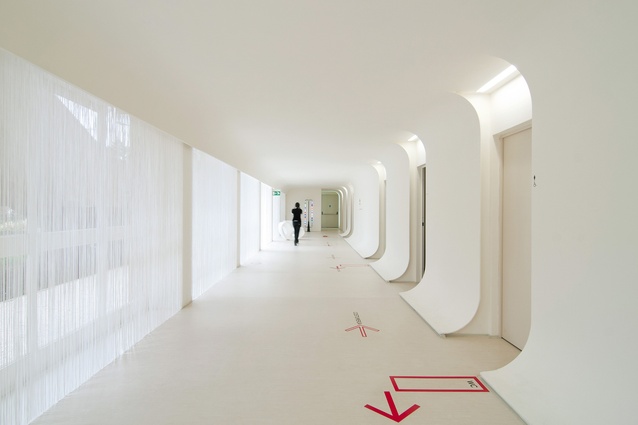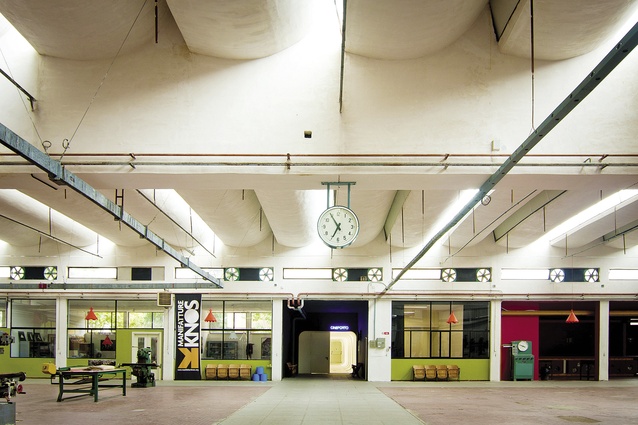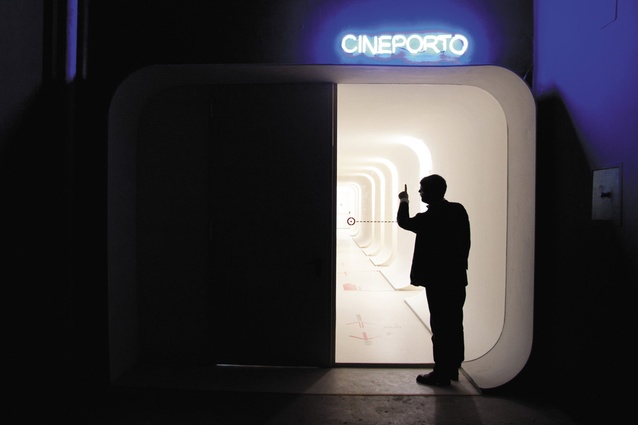Metamorphosis
Swords, sandals, the spaghetti western and Sophia Loren... that’s the past of Italian film. Interior’s roving correspondent pops into Italy to check out the new wave of film production.
Apulia, the long, stiletto-shaped region on the heel of Italy, is a rich, eclectic landscape of the sort that can only occur over thousands of years of continual inhabitation. The region has the highest density of prehistoric- and Roman-era sites in Italy. With its varied landscapes, short travel times, good weather and a cost-base cheaper than its northern neighbours, it also makes for a popular production centre for the film industry.
Since 2007, the Apulia Film Commission, under the direction of a masterplan, has been actively bringing productions to the area, assisting them with logistics and has recently opened a new production hub in Lecce. Local architects Metamor have transformed part of the former Knos Industrial Complex and Engineering School into studios, costume departments, offices and public areas. Since adopting the masterplan, Apulia has seen over 130 productions shot in the region and with the addition of the new facility it is hoped the future of the local film industry is bright.

Entitled Cineporto, the Lecce facility is the sister site to the larger production centre in Bari where the Film Commission is also based. The recipe of taking a former industrial estate and turning it over to the creative industries is a familiar one – when unsuccessful, such places can be underused and consigned to marketing material; although, when executed successfully the benefits can be far-reaching, cementing the industry for which they were designed and contributing to the economic and social fabric of the area.
The Apulia Film Commission and local municipality obviously knew what they were doing however, as the masterplan was well developed – leveraging the region’s inherent benefits as a base of production. As well as providing resources for the existing talent pool of filmmakers, the new facilities were designed to attract those from outside the region. Marketing efforts added to this, highlighting the range of historic sites and varied landscapes easily accessible from the region. Indeed, the region has a good track record of public organisations and private companies identifying industry-specific opportunities and turning them into productive sectors of the local economy. Food processing, textiles and furniture manufacture are three existing examples, while there are high hopes for the film industry and other creative industries located at the 4,000m2 Knos complex.
The Cineporto part of the complex was built in the space between the former classrooms and machinery workshops of the engineering school. Designed for flexibility, three buildings with large open spaces are connected by a central access corridor and service area. Casting studios, costume departments and hair and make-up occupy the larger spaces, while the public face of the building and exhibition area is located towards the entry. With every production a new challenge, much of the space has been left un-programmed, giving film-makers more flexibility in re-purposing the space. Reflecting the low budget and large areas to cover, materials like linoleum and plasterboard have been used throughout – the lino is particularly useful for the floor-to-ceiling surfaces. Architect Gaetano Fornarelli describes the impact of the new public spaces, commenting that “people often stop in the corridors to talk or just to watch what is going on”.
As might be expected, the film sets have had an influence on the architects with Metamor saving special mention to Frederick Kiesler and his Endless House. Metamor embraced the subject, using the opportunity to design for the film industry to try an overtly scenic approach. As architect Juri Battaglini describes, “We wanted to challenge the theme of interior design in a theatrical sense”. The curved white walls embellished by graphic line work are successful in a way that would be difficult to execute in another programme type.
The four partners of Metamor have a unique way of working with the Cineporto project – no exception. Mauro Lazzari describes their office set-up as: “We all work around the same two-metre by two-metre table”, before his brother Marco adds, “We continuously share opinions about our work, architecture, society and life too.”
It’s an approach that fits with the lifestyle of the architects and their connection to the region and, from the results of the Cineporto, obviously suits them very well.












